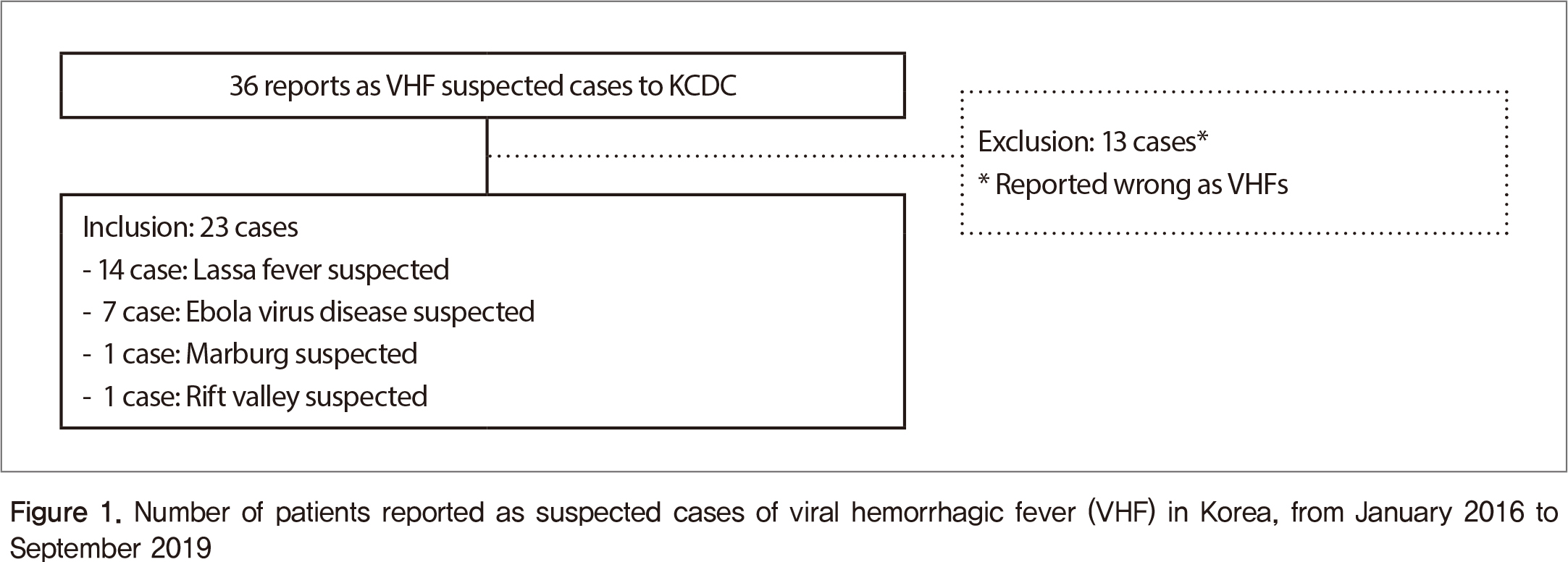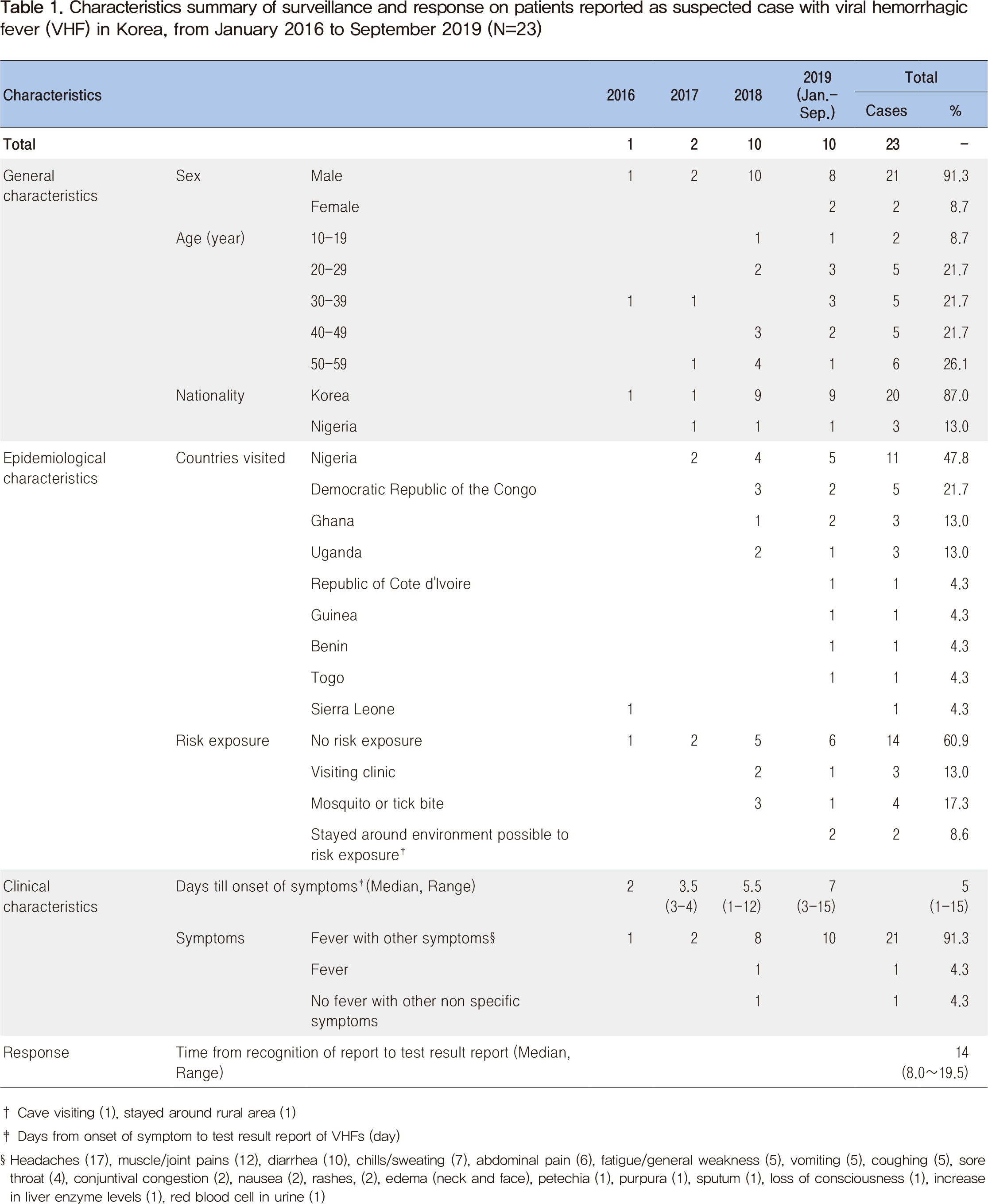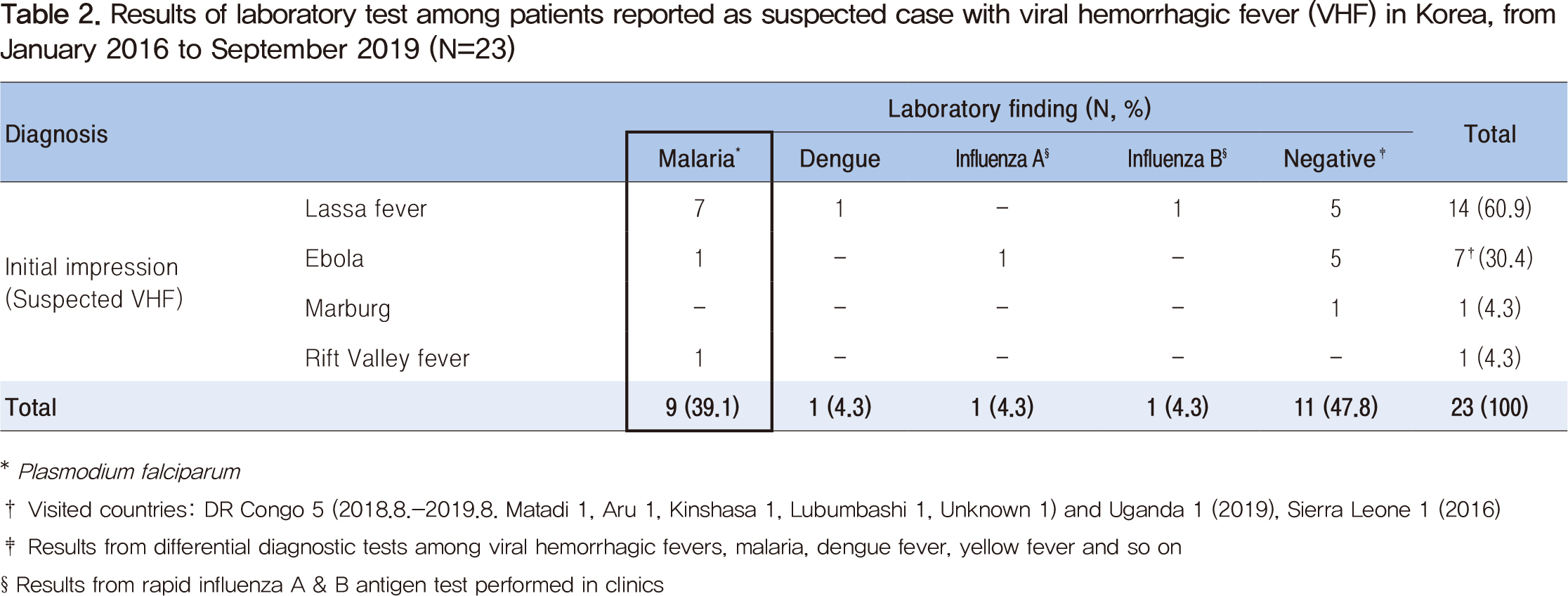contents area
Public Health Weekly Report
detail content area
- Date2019-11-21 09:34
- Update
- DivisionDivision of Emerging Infectious Diseases Response
Characteristics of reporting and response, and national guidelines for the suspected cases with viral hemorrhagic fever (VHF) in Korea
Jang Yoon Suk, Kim Hwami, Kim Jeong Hyun, Gwack Jin
Division of Emerging Infectious Diseases Response, Center for Infectious Disease Control, KCDC
Viral hemorrhagic fevers (VHF), such as Ebola, Marburg and Lassa fever, are constantly occurring in endemic areas of the world. VHF have been national notifiable disease since 2000 and there have been no cases of VHF imported into Korea. However, the possibility of imported to Korea of the disease is still present due to increase in overseas travel and international exchanges. The aim of this report is to share the characteristics of the VHF suspected cases reported to national surveillance system and public health response, and to introduce th main points of the response guidelines. A total of 23 cases have been reported as suspected cases with VHF from 2016 to September 2019, none of them have been confirmed as VHF patient. Nine out of 23 cases (39.1%) were confirmed as Plasmodium falciparum malaria. It took 14 hours (median value) to define the test results of VHF (from the reporting of clinician to reporting of laboratory test results). None of the reported cases met both clinical and epidemiological criteria of VHF case definition of Korea Infectious Disease Diagnosis and Reporting Standards and most of the reports were made for the exclusion test for viral hemorrhagic fever.
In July 2019, the Korea Centers for Disease Control and Prevention (KCDC) issued ‘Guidelines for response to VHF (1st edition).’ The main feature of the guideline is to classified the suspected cases into three categories according to the epidemiological risks and clinical symptoms, and present the targets of management and management exclusion. After analyzing the suspected cases and response characteristics of VHF, KCDC shared it with clinics and hospitals, and also complementary details have been checked in the guideline. Further review of cumulative cases and supplementation of guidelines are continuously required.
Keywords: Viral hemorrhagic fever, Ebola, Marburg, Lassa fever, Suspected case, Response, Guideline



